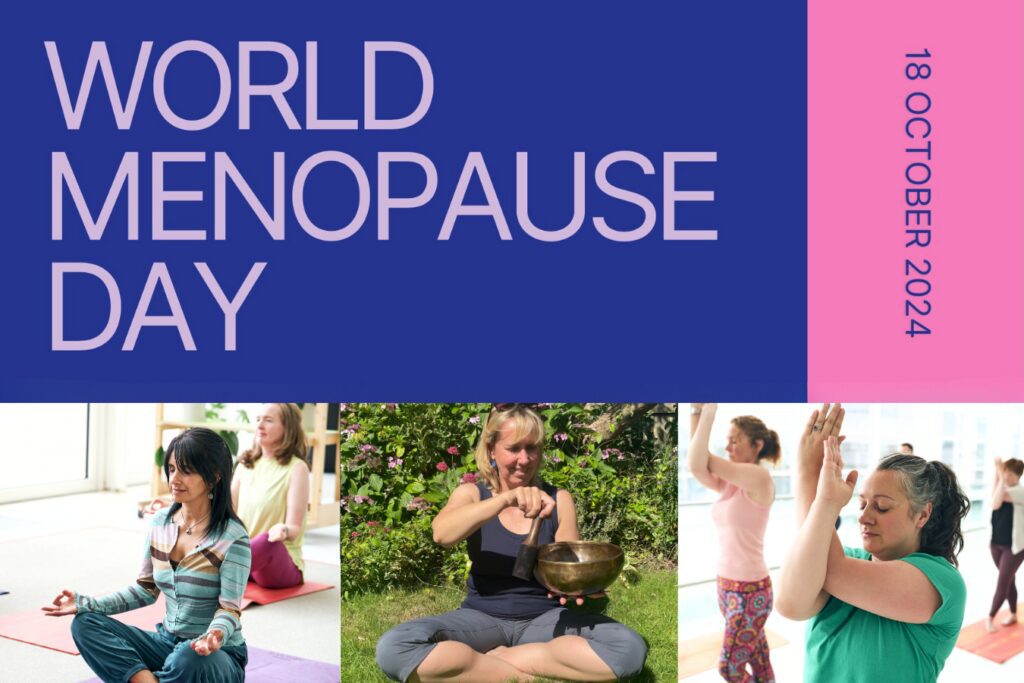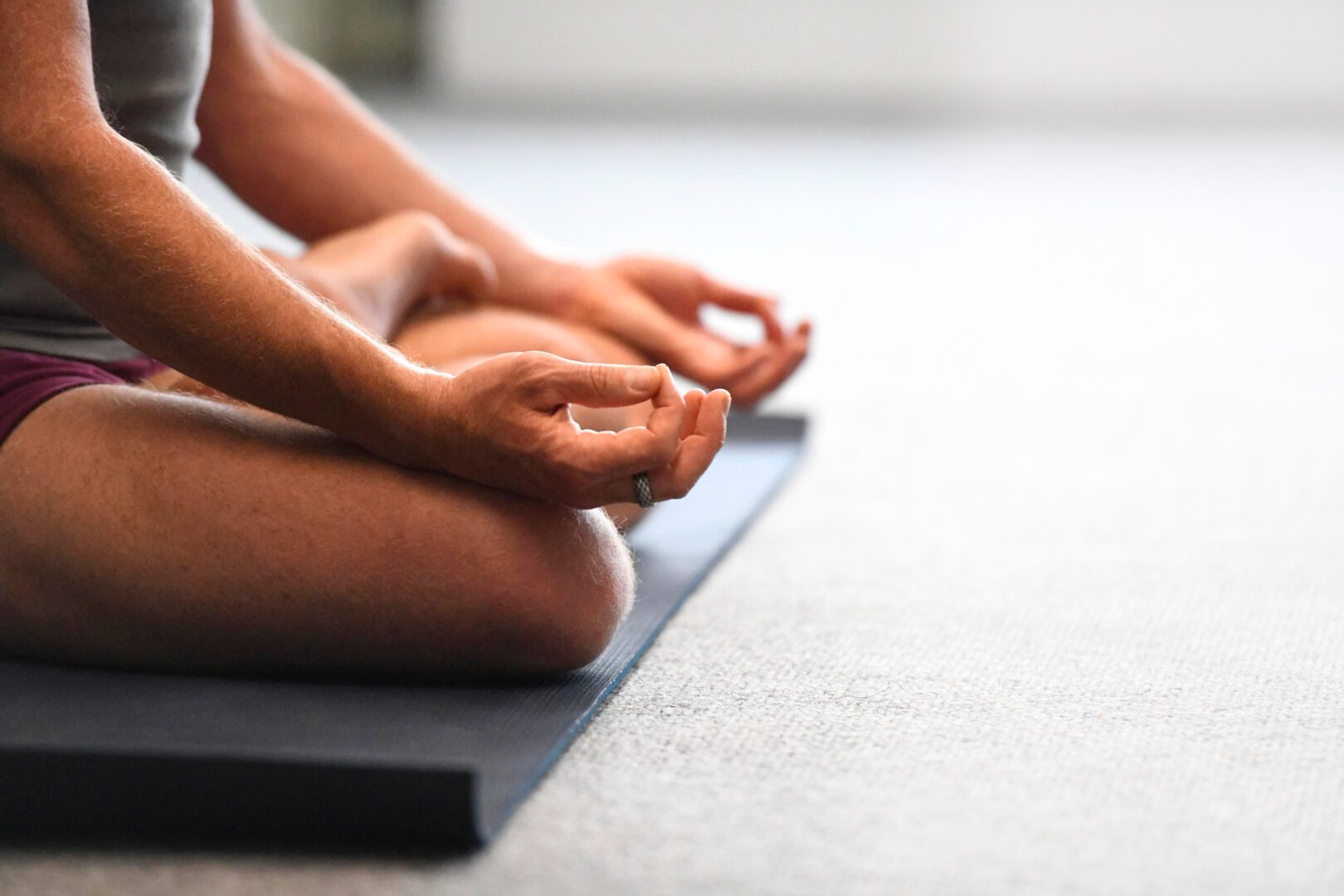
How yoga can support women through menopause and beyond
Article contributed by Kate Knowles, BWY teacher and CPD tutor
Awareness of the impact of menopause has grown significantly over the past few years, and the good news is that our yoga practice can be incredibly beneficial in supporting our physical, mental and emotional wellbeing through this time of transition, and into the post-menopause years.
International Menopause Day, observed annually on 18 October, focuses this year on Hormone Replacement Therapy (HRT). There has been a lot of controversy over HRT in the past, but the British Menopause Society now advises that for most women, the benefits outweigh the risks.
Every woman’s experience of menopause is unique, so it is important that women are well-informed so that they can make the best personal choices in conjunction with their healthcare providers.
The motto EDUCATE, EMPOWER, EMBRACE encapsulates the ethos of Menopause Yoga. A qualified menopause yoga teacher can educate women about the symptoms of menopause and direct them to further resources. With the right information, women feel empowered to get the support they need. A group of women coming together, whether in person or online, can foster mutual support, releasing oxytocin – the happy hormone – and creating a sense of connection, community, and a virtual or real embrace!
Managing hot flushes
Hot flushes and night sweats are common physical symptoms of menopause, although not all women will experience them. Many women find that physical exercise can help reduce the intensity and frequency of hot flushes, so including dynamic practices could be helpful. Sitali and Chandra Bhedana are two yoga breathing techniques that help to cool the body and calm the mind.
Sitali involves inhaling through a rolled tongue (or pursed lips if you can’t roll your tongue), which cools the air as it enters the body. This technique is known for reducing body heat, easing stress, and bringing a sense of relaxation.
Chandra Bhedana, or left-nostril breathing, involves breathing in only through the left nostril, which is associated with calming and cooling energy. It helps to balance the nervous system, reduce anxiety, and bring a soothing effect to the mind and body.
Visualisations of water or ice may also be of use.
Managing anxiety
Feelings of anxiety and overwhelm are common symptoms I frequently hear about from women. In these moments, grounding techniques can be incredibly effective in helping to calm the mind and body. By shifting our focus to the support of the ground beneath us or the sensation of air on our skin, we can reconnect with the present moment, easing some of the mental and emotional load.
A simple grounding technique like Earth Mudra—touching the tip of the thumb to the tip of the ring finger—can help bring balance and reduce anxiety. Repeating a Sankalpa (a positive intention) such as ‘I am safe and secure’ can provide reassurance during challenging moments. Additionally, extending the exhale slightly, using a 3:5 breathing ratio (inhale for 3, exhale for 5), helps activate the parasympathetic nervous system, encouraging a deeper sense of calm.
Vagal Toning techniques, like gentle fascial massage, can also be highly effective in reducing anxiety. Dr. Arielle Schwartz is an excellent resource for this. Here are some fascial massage techniques you could try:
Jaw and Cheek Massage: Use your fingertips to apply light pressure in circular motions along your jawline and cheeks. This can help release tension in the face and improve vagal tone.
Neck Fascia Release: Place your hands gently on either side of your neck and slowly stroke downward, moving from just under your jaw towards your collarbone. This can help calm the vagus nerve and reduce anxiety.
Managing disturbed sleep
Broken sleep can be a real issue for many women (myself included), and hormonal changes can really exacerbate this, which in turn makes the other menopause symptoms feel worse. Restorative yoga practices can be enormously beneficial in helping women to sleep better, or to at least get some rest if sleep remains elusive. Legs up the wall pose can work really well in bed, along with supported pose of the child over a stack of pillows and covered with a duvet. Including a regular yoga nidra practice can help with feelings of exhaustion, and may help to improve sleep.
Find out more
Join Kate for an in-person CPD day at Barnard Castle on 26 October from 10am-4pm. Book here: https://portal.bwy.org.uk/user/events/632
About BWY
The British Wheel of Yoga (BWY) is committed to sharing yoga’s transformative power and rich heritage through events and education. Guided by yoga’s principles and traditions, BWY’s mission is to enrich lives through yoga, increasing accessibility and inclusivity. Established as a registered charity in 1965 and recognised as the National Governing Body for Yoga by Sport England and Sport Wales, BWY serves more than 5000 members and is supported by a 100-strong local volunteer network and a small central team.
For all media inquiries
Natalie Lyndon, BWY PR & Communications Officer



